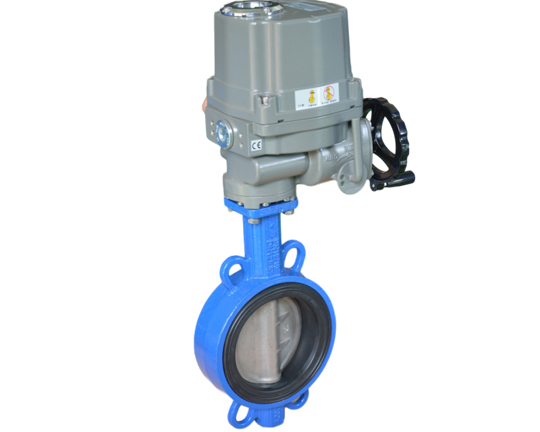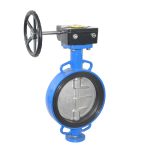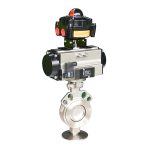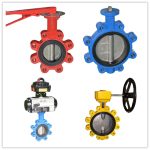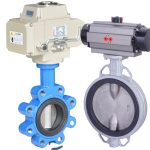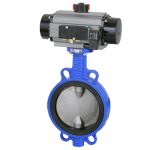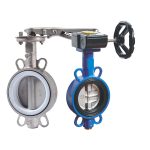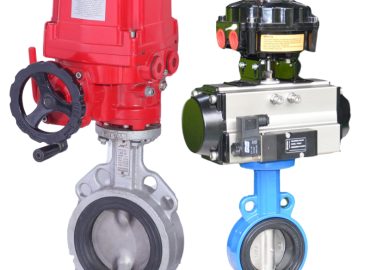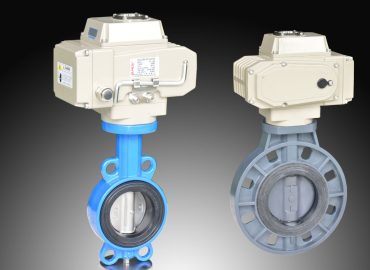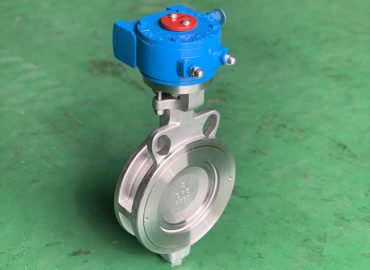When planning a project that involves the regulation of fluid flow, selecting the right valve is crucial. Among the different types of valves available, wafer style valves have gained popularity due to their compact design and efficiency. However, the process of choosing the correct wafer style valve for your project can be complex, as it involves careful consideration of various factors such as the purpose of the project, the size of the valve, material, pressure rating, temperature tolerance, cost, and reliability of the supplier. This guide aims to simplify this process by outlining the key factors to consider when selecting the right wafer style valve for your project.
Introduction
Selecting the right wafer style valve for your project is a crucial step that requires thoughtful consideration. Wafer style valves, known for their compact design and efficient operation, are used in a variety of applications. However, to ensure optimal performance, it’s essential to consider several factors before making a selection. First, understand the specific requirements of your project. Different types of wafer style valves are designed for different applications, and choosing a valve that suits your project’s needs can significantly enhance efficiency. Second, consider the size of the valve.
The size of the valve can impact its performance, and selecting the right size can prevent potential operational issues down the line. Third, pay attention to the material of the valve. The material can affect the valve’s durability and compatibility with the fluid it will control. Fourth, consider the pressure rating of the valve. It’s important to choose a valve that can handle the pressure requirements of your project to ensure safety and efficiency. Fifth, take into account the temperature tolerance of the valve. A valve that can withstand your project’s operating temperatures is likely to perform better and last longer. Lastly, consider the cost and the reliability of the supplier. While cost is always a factor, it’s also important to choose a reputable supplier to ensure quality and reliability. By taking the time to consider these factors, you can select the right wafer style valve that not only meets your project’s requirements but also offers long-term efficiency and reliability.
Brief introduction to wafer style valves.
Wafer style valves are a type of industrial control valve used to regulate the flow of fluids in a system. Known for their distinctive design and compact size, these valves get their name from their “wafer-like” thinness. Unlike other valves that require extra space for installation, wafer style valves fit snugly between two pipe flanges, making them an ideal choice for systems with space constraints. They operate through a disc or a plate that rotates to open, close, or throttle the flow of fluid. This simple yet effective mechanism ensures efficient operation and control. Available in a variety of materials, sizes, and pressure ratings, wafer style valves are versatile and can be used in a wide range of applications, from water treatment plants to oil refineries. Their durability, easy maintenance, and cost-effectiveness make them a popular choice in many industries.
Importance of choosing the right valve for a project.
Choosing the right valve for a project is of paramount importance as it directly impacts the efficiency, safety, and success of the operation. The correct valve ensures optimal flow control, enabling the system to function as intended. It can handle the required pressure and temperature conditions, ensuring durability and longevity. Conversely, the wrong valve can lead to operational inefficiencies, frequent breakdowns, and even safety risks. It could result in poor flow regulation, leaks, or catastrophic failures, leading to increased maintenance costs and potential downtime. Additionally, each type of valve comes with its own set of specifications and is designed for specific applications. Therefore, understanding your project’s requirements and selecting a valve that aligns with these needs is vital for the smooth operation and overall success of your project.

Understanding Wafer Style Valves
Wafer style valves are an integral part of many industrial and commercial systems, playing a vital role in controlling and regulating the flow of fluids. These valves are known for their unique design, which features a disc mounted on a rotating shaft within a slim body, giving them a wafer-like appearance. The operating mechanism of these valves is relatively straightforward; the disc rotates to open or close the valve, thereby allowing or preventing the flow of fluid. When the valve is fully opened, the disc rotates a quarter turn, providing an unobstructed path for the fluid. Conversely, when the valve is completely closed, the disc rotates back, blocking the fluid’s passage. This simple yet effective operation ensures efficient flow control with minimal friction loss. Wafer style valves are available in a variety of materials, including stainless steel, cast iron, and PVC, each offering distinctive benefits in terms of durability, resistance to corrosion, and compatibility with different types of fluids. Furthermore, these valves can handle a wide range of pressure and temperature conditions, making them suitable for various applications. Despite their robust capabilities, wafer style valves are compact and easy to install, especially in systems where space is at a premium. Their versatility, efficiency, and cost-effectiveness have made them a popular choice in industries ranging from water treatment to oil and gas. Understanding the specifics of how wafer style valves function can greatly assist in selecting the most appropriate valve for your project needs.
In-depth explanation of wafer style valves and how they function.
Wafer style valves, characterized by their thin, compact design, play a crucial role in regulating fluid flow in various systems. The valve’s operation hinges on a disc or plate, which is centrally mounted on a rotating shaft. This disc forms the core of the valve’s functionality. When the valve is in the open position, the disc rotates 90 degrees so it aligns with the fluid flow, resulting in minimal obstruction and maximum flow. Conversely, when the valve needs to be closed, the disc rotates back by 90 degrees, perpendicular to the flow, thereby blocking it completely. This swift and efficient mechanism allows for precise control over fluid flow. A key feature of wafer style valves is their design for installation between two pipe flanges, which holds the valve in place. This not only saves space but also simplifies the installation process. Despite their slim profiles, these valves are robust, capable of handling a wide range of pressures and temperatures, making them suitable for a multitude of applications. They can be made from a variety of materials such as stainless steel, cast iron, or PVC, each offering different benefits in terms of durability and compatibility with certain types of fluids. Understanding the mechanics and features of wafer style valves is essential for their effective application in any fluid control system.
Overview of different types of wafer style valves available.
Wafer style valves come in various types, each with its unique design characteristics and applications. One of the most common types is the wafer butterfly valve, which uses a disc as the closing mechanism that rotates 90 degrees to open or close the flow path. This design is appreciated for its compact size, cost-effectiveness, and ease of installation. Lug-style butterfly valves are another type, similar in design to wafer butterfly valves but with additional lugs around the valve’s outer edge. These lugs allow the valve to be installed into a system using bolts without needing nuts on the opposite side, making it suitable for dead-end service. Double offset and triple offset butterfly valves are advanced versions that are designed to reduce wear and improve sealing capability for higher pressure and temperature applications. In addition to these, there are also wafer check valves, which allow fluid to flow in one direction and prevent backflow. Each of these types has its distinct advantages and is suited to specific applications, offering engineers and project managers a range of options when implementing fluid control systems.
Key Factors in Choosing a Wafer Style Valve
When choosing a wafer style butterfly valve for a particular project, several key factors need to be considered to ensure the valve’s compatibility and effectiveness. Firstly, the nature of the fluid that will be passing through the valve is crucial. Different valves are designed to handle different types of fluids, and it’s essential to choose a valve that can withstand the fluid’s characteristics, whether it’s a corrosive chemical, oil, gas, or water. Secondly, the pressure and temperature requirements of the system must be taken into account. The chosen valve should be able to operate effectively within the system’s pressure and temperature ranges. Thirdly, the size of the valve plays a significant role. The valve’s size should align with the pipe size in the system to ensure a proper fit and optimal performance. Fourthly, the material from which the valve is made is also significant because it affects the valve’s durability and longevity. Materials like stainless steel, brass, or PVC each have their own advantages and are suitable for different environments. Fifthly, consider the valve’s operation, whether it’s manual or automated, as this can impact the ease of use and control accuracy. Finally, the cost and supplier reliability should be considered. While it’s important to find a cost-effective solution, the quality of the valve and the reliability of the supplier should never be compromised. By carefully considering these factors, one can select a wafer style valve that meets the project’s requirements and ensures efficient and safe operation.
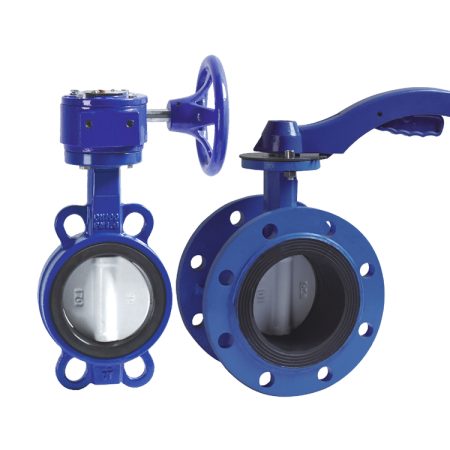
Understanding Your Project Needs
Understanding your project needs is a critical first step in any successful project, be it in construction, manufacturing, or any other industry. This involves a thorough assessment of the project’s goals, constraints, and requirements. You need to identify the scope of the project, the resources available, the timeline, and the desired outcome. For instance, if you’re working on a fluid control system, you’ll need to understand the type of fluid involved, the pressure and temperature ranges, the flow rate, and any specific environmental conditions. You should also consider factors like budget constraints, regulatory requirements, and potential risks. This comprehensive understanding will guide your decisions throughout the project, from selecting the right equipment like valves and pipes, to choosing the appropriate installation methods and maintenance plans. It can help you anticipate challenges, make informed choices, and ultimately ensure the success of your project.
Discussion on why understanding your project is crucial in valve selection.
Understanding your project is crucial in valve selection because it allows you to align the valve’s capabilities with your system’s requirements, ensuring optimal performance and longevity. Every project has unique needs based on factors such as the type of fluid being handled, the operating pressure and temperature, the required flow rate, and the specific environmental conditions. For instance, a valve for a high-pressure steam system will have different specifications compared to one used in a low-pressure water treatment plant. Additionally, the material of the valve must be compatible with the fluid to prevent corrosion and ensure durability. Understanding these nuances not only helps in selecting a valve that fits perfectly into your system but also contributes to cost-effectiveness by minimizing the need for frequent replacements or repairs due to inappropriate valve choice. Thus, a thorough understanding of your project is a critical factor in making an informed and successful valve selection.
How different valves suit different project requirements.
Different valves suit different project requirements due to their unique design characteristics and functionalities. For instance, a gate valve, known for its ability to provide an unobstructed flow path, is ideal for applications that require full flow or shut-off of fluid. However, for systems that need to regulate flow rather than just stop or start it, a globe valve is more suitable due to its superior throttling capabilities. Butterfly valves, with their compact size and quick operation, are perfect for space-constrained applications or those requiring frequent operation. Ball valves offer tight sealing and are great for systems handling high pressure, temperature, or corrosive fluids. If preventing backflow is a requirement, check valves, which allow fluid to flow in one direction only, are the go-to choice. Moreover, the material of the valve also plays a crucial role in determining its suitability. Stainless steel valves are ideal for corrosive environments, while brass or bronze valves are often used in non-corrosive conditions. Therefore, understanding the specific requirements of your project is key to selecting the right valve that ensures efficient and reliable operation.
Size and Dimension
The size and dimension of a valve are crucial factors that impact its compatibility with the rest of the system and its overall performance. The size of a valve typically refers to the nominal diameter of the passage that allows fluid to flow through it, and it is often measured in inches or millimeters. It’s important to match the valve size with the pipe size in the system to ensure a proper fit and prevent leakage or pressure loss. The dimensions of a valve, on the other hand, include other measurements such as the length, width, and height of the valve. These are especially important when dealing with space constraints in the system design. A valve that is too large may not fit into the allocated space, while one that is too small may not be able to handle the required flow rate. Therefore, considering the size and dimensions of a valve is crucial for achieving optimal system performance and efficiency.
Significance of valve size and dimension in its performance.
The size and dimension of a valve significantly influence its performance and efficiency. The valve size, which denotes the diameter of the passage for fluid flow, directly affects the flow rate. A valve that is too small for a given system might restrict the flow, leading to increased pressure drop and decreased system efficiency. Conversely, a valve that is too large may not be able to control the flow effectively, leading to instability in the system. Furthermore, the dimensions of the valve, including its length, width, and height, are crucial when dealing with space constraints in the system layout. A valve that doesn’t fit into the allocated space can cause installation difficulties and may necessitate costly design modifications. Additionally, valves with inappropriate dimensions can also impact maintenance activities, as ample space is required for valve inspection, removal, or replacement. Hence, selecting a valve with the appropriate size and dimension is critical for ensuring optimal system performance, ease of installation, and efficient maintenance.
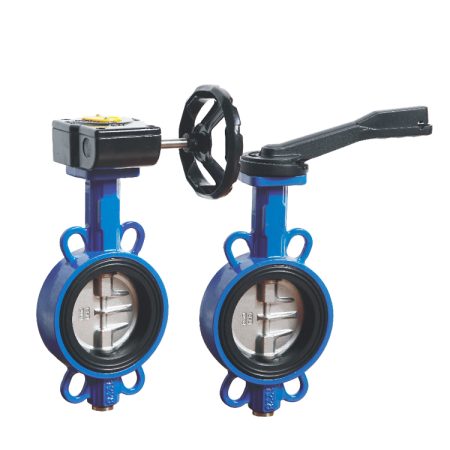
Tips on how to choose the right valve size for your project.
Choosing the right valve size for your project is a crucial step and involves careful consideration of several factors. First, you must consider the diameter of the pipe in your system. The valve size should match this to ensure proper fit and prevent leakage or pressure loss. Second, consider the flow rate required in your system. A valve that is too small may restrict the flow, while one that is too large may result in control issues. Third, take into account the pressure drop across the valve. A valve that is too small can cause a high pressure drop, leading to inefficiency. Conversely, a valve that is too large may lead to a lower than necessary pressure drop, resulting in wasted energy. Lastly, consider the nature of the fluid being handled. If the fluid contains solids or is viscous, you may need a larger valve to prevent clogging. By carefully considering these factors, you can select the right valve size that ensures optimal performance and efficiency in your project.
Material of the Valve
The material of the valve is a critical aspect that determines its performance, durability, and suitability for specific applications. Valves are typically made from a wide variety of materials, including stainless steel, carbon steel, brass, bronze, cast iron, and plastic, among others. The choice of material depends on several factors such as the nature of the fluid being controlled, the operating temperature and pressure, and the environmental conditions. For instance, stainless steel valves are known for their corrosion resistance and strength, making them suitable for handling corrosive fluids or high-pressure applications. On the other hand, plastic valves, such as those made from PVC or polypropylene, are often used in low-pressure applications involving non-corrosive substances. The material of the valve not only influences its functionality and lifespan but also its cost and maintenance requirements.
Examination of the different materials used in wafer style valves.
The examination of different materials used in wafer-style valves is crucial as it significantly impacts their performance, durability, and compatibility with various applications. Wafer-style valves are commonly made from materials such as stainless steel, cast iron, and brass, among others. Stainless steel, particularly AISI 316, is widely used due to its excellent formability and corrosion resistance, making it suitable for applications involving corrosive fluids or high temperatures. Cast iron, on the other hand, is valued for its high strength and corrosion resistance, often enhanced with an epoxy coating for added durability. Brass is another common material used for its good thermal conductivity and resistance to wear and tear. The choice of material depends on several factors, including the nature of the fluid being controlled, operating conditions, and environmental factors. Therefore, a detailed examination of these materials is vital in selecting the appropriate wafer-style valve for a specific application.
How the choice of material affects the durability and performance of the valve.
The choice of material plays a crucial role in determining the durability and performance of a valve. Different materials offer varying degrees of strength, corrosion resistance, and heat tolerance, all of which impact the valve’s longevity and functionality. For example, stainless steel valves are highly durable and resistant to corrosion, making them suitable for applications involving corrosive fluids or high temperatures. On the other hand, brass valves are known for their good thermal conductivity and resistance to wear, making them ideal for high-temperature operations. Plastic valves, such as those made from PVC or polypropylene, while less durable than metal ones, are resistant to chemical corrosion and are suitable for handling a variety of chemicals. Therefore, the material directly influences the valve’s operational life, maintenance needs, and overall performance. A careful selection of material based on the application requirements can significantly enhance the valve’s efficiency and lifespan.
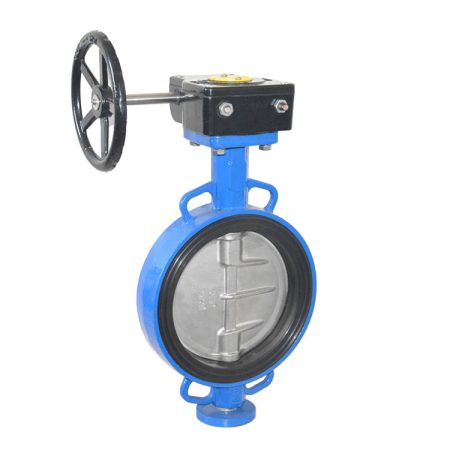
Pressure Capacity
Pressure capacity is a critical attribute when it comes to the performance of a valve. It refers to the maximum pressure that a valve can withstand while maintaining its functionality and integrity. The pressure capacity of a valve is usually determined by its design, material, and construction quality. Valves made from robust materials such as stainless steel or brass typically have higher pressure capacities and are suitable for high-pressure applications. Conversely, valves made from softer materials like plastic may have lower pressure capacities. It’s crucial to select a valve with a pressure capacity that exceeds the system’s maximum operating pressure to ensure safety and longevity. Overloading a valve beyond its pressure capacity can lead to failure, resulting in leaks, system downtime, and potential safety hazards. Therefore, understanding a valve’s pressure capacity is vital in choosing the right valve for the application.
Understanding the importance of pressure capacity in valve selection.
Understanding the importance of pressure capacity in valve selection is crucial to ensure optimal performance, safety, and longevity of your system. The pressure capacity of a valve refers to the maximum amount of pressure it can withstand without compromising its functionality or integrity. Selecting a valve with an adequate pressure capacity is vital because if a valve is subjected to pressure beyond its capacity, it could lead to system failures, leaks, or even potential safety hazards. Therefore, when choosing a valve, one must consider the operating conditions of the system, including the maximum pressure it will be exposed to. A valve’s pressure capacity should exceed the system’s maximum operating pressure to provide a margin of safety. By understanding and considering pressure capacity in valve selection, you can ensure that your system operates efficiently and safely over its lifespan.
How to match your project’s pressure requirements with the valve’s capacity.
Matching your project’s pressure requirements with the valve’s capacity is a vital step in ensuring optimal system performance and safety. First, you need to understand the maximum operating pressure of your system. This is the highest pressure that your system will experience under normal conditions. Once you’ve determined this, you should choose a valve whose pressure capacity exceeds this value. This provides a margin of safety and ensures that the valve can handle any unexpected pressure surges. It’s also important to consider the nature of the fluids being controlled, as some fluids may exert more pressure than others. Remember, using a valve with a pressure capacity lower than your system’s requirements can lead to valve failure and potential safety hazards. Therefore, always ensure that the valve’s pressure capacity aligns with or surpasses your project’s pressure requirements.
Temperature Range
Temperature range is an important factor to consider when selecting a valve for a particular application. It refers to the minimum and maximum temperatures that a valve can safely withstand while maintaining its integrity and functionality. Different materials have different temperature tolerances. For instance, metal valves, such as those made from stainless steel or brass, typically have higher temperature ranges and can withstand both very low and very high temperatures. On the other hand, plastic valves, like those made from PVC or polypropylene, have a lower temperature range and are suitable for applications involving moderate temperatures. It’s crucial to select a valve with a temperature range that meets or exceeds the operating conditions of your system. Using a valve outside of its specified temperature range can lead to material degradation, valve malfunction, and potential safety risks.
Importance of taking into account the operating temperature range of the valve.
Taking into account the operating temperature range of a valve is crucial in ensuring its optimal performance, durability, and safety. The operating temperature range refers to the range of temperatures within which the valve can function effectively without any degradation in its performance or structural integrity. Different valve materials have different temperature tolerances, and using a valve outside its specified temperature range can lead to material degradation, decreased performance, and even failure. For instance, valves made from metal like stainless steel or brass can withstand higher temperatures compared to those made from plastic. Therefore, when selecting a valve, it’s essential to consider the temperature conditions under which it will operate. A valve’s temperature range should align with or exceed the system’s operating temperature to ensure its longevity and efficient performance.
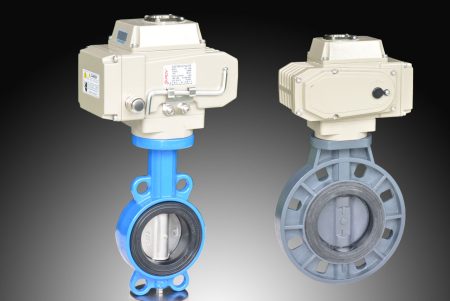
How to select a valve that can handle your project’s temperature conditions.
Selecting a valve that can handle your project’s temperature conditions is essential for ensuring the system’s efficiency, safety, and longevity. Start by understanding the minimum and maximum temperatures your project will encounter during operation. This includes considering any potential temperature fluctuations or extremes. Once you know your temperature range, you can begin to look for valves made from materials that can withstand these temperatures. For instance, if your system operates at high temperatures, a valve made from heat-resistant materials like stainless steel or brass could be suitable. Conversely, if your system operates at moderate temperatures, plastic valves may be sufficient. Always ensure that the chosen valve’s temperature capacity exceeds the maximum operating temperature of your system to provide a margin of safety. Remember, using a valve outside its specified temperature range can lead to material degradation, decreased performance, and potential safety hazards.
Cost Considerations
Cost considerations play a significant role in the selection of a valve for your project. The cost of a valve is influenced by various factors, including its type, material, size, and special features like pressure and temperature ratings. While it might be tempting to opt for the cheapest option, it’s crucial to remember that quality and performance should not be compromised. A more expensive valve may offer better durability, higher performance, and longer lifespan, leading to lower maintenance and replacement costs in the long run. On the other hand, a cheaper valve might initially save on upfront costs but could incur higher maintenance and replacement costs over time due to lower quality and shorter lifespan. Therefore, when considering the cost of a valve, it’s essential to look beyond the initial purchase price and consider the total cost of ownership, which includes the costs of installation, operation, maintenance, and potential replacement.
Weighing the cost against the quality and durability of the valve.
Weighing the cost against the quality and durability of a valve is a key part of the valve selection process. While it may be tempting to opt for the most affordable option, it’s important to consider the overall value that the valve provides. A high-quality, durable valve might have a higher initial cost, but it can offer better performance, longer lifespan, and lower maintenance costs over time, ultimately providing better value for money. In contrast, a cheaper valve may save you money upfront, but if it’s made from inferior materials or lacks the necessary pressure and temperature ratings for your system, it could lead to frequent malfunctions, higher maintenance costs, and a shorter lifespan, making it more costly in the long run. Therefore, when selecting a valve, don’t just consider the initial purchase price. Instead, weigh the cost against the quality, durability, and expected performance of the valve to make a more informed decision.
Considering the long-term operational costs.
Considering the long-term operational costs is a crucial aspect of selecting a valve for your project. While the initial purchase price is an important factor, it’s just one part of the total cost of ownership. Operational costs include maintenance, repairs, replacements, and even potential downtime costs if the valve malfunctions and disrupts your operations. For example, a high-quality, durable valve may have a higher upfront cost but could result in lower operational costs over time due to its reliability and longevity. On the other hand, a cheaper valve may save you money initially, but frequent repairs or replacements could lead to higher operational costs in the long run. Therefore, when choosing a valve, it’s important to take into account not just the purchase price but also the long-term operational costs to ensure that you’re making a cost-effective decision.
Choosing a Reliable Supplier
Choosing a reliable supplier is a critical step in the process of selecting a valve for your project. A trustworthy supplier not only provides high-quality products but also offers excellent customer service, technical support, and after-sales services. Start by researching potential suppliers, looking at factors such as their reputation in the market, the quality of their products, and the feedback from their previous customers. You can obtain this information from various sources, including online reviews, industry forums, and professional networks. It’s also important to assess the supplier’s technical expertise and knowledge about different types of valves and their applications. A good supplier should be able to guide you in choosing the right valve that meets your specific requirements and operating conditions. Additionally, consider the supplier’s delivery capabilities. They should be able to deliver the product on time and in perfect condition to avoid any delays in your project. After-sales services, including warranty and maintenance support, are also crucial as they can significantly impact the long-term operational costs of the valve. Therefore, while the cost of the valve is an important consideration, the reliability and services offered by the supplier should not be overlooked. Choosing a reliable supplier can ensure that you get a high-quality valve that meets your needs and provides the best value for your investment.
The role of a reliable supplier in procuring quality wafer style valves.
A reliable supplier plays a pivotal role in procuring quality wafer style valves. These types of valves, known for their compact and efficient design, require precise manufacturing processes to ensure their integrity and performance. A trustworthy supplier will have stringent quality control measures in place to ensure that each valve meets or exceeds industry standards. They can provide comprehensive product details, including material composition, pressure and temperature ratings, and expected lifespan, allowing you to make an informed decision. Furthermore, a reliable supplier will offer expert guidance on choosing the right wafer style valve based on your project’s specific needs and operating conditions. Post-purchase services like warranty, maintenance support, and timely delivery are also crucial factors that a reputable supplier should provide. In essence, a reliable supplier not only ensures the procurement of high-quality wafer style valves but also contributes to their successful implementation, thereby enhancing the overall efficiency and longevity of your system.
Tips on how to identify a dependable valve supplier.
Identifying a dependable valve supplier involves several key aspects. First, research the supplier’s reputation in the industry. This can be done by checking online reviews, ratings, and feedback from previous customers. A supplier with consistently positive reviews is likely to be reliable. Second, consider the supplier’s experience and expertise. Suppliers with years of industry experience and deep knowledge of various types of valves are more likely to provide high-quality products and services. Third, assess their customer service. A good supplier should be responsive, helpful, and able to provide expert advice on product selection based on your specific needs. Fourth, check if they offer after-sales services like warranty and maintenance support, which are essential for ensuring the long-term performance and reliability of the valve. Finally, consider their delivery capabilities. Dependable suppliers should be able to deliver the valves on time and in perfect condition to avoid any project delays. By considering these factors, you can identify a dependable valve supplier that can provide quality products and excellent service.
Conclusion
In conclusion, selecting the right wafer style valve for your project requires careful consideration of several factors. It’s not just about choosing the cheapest option; it’s about finding a valve that offers the best value for your investment. This means considering the valve’s quality, durability, and performance, as well as the long-term operational costs associated with it.
Cost considerations are certainly important, but they should be weighed against the quality and durability of the valve. A high-quality, durable valve may have a higher initial cost, but it can offer better performance, longer lifespan, and lower maintenance costs over time, ultimately proving to be more cost-effective.
Long-term operational costs should also be taken into account. These include maintenance, repairs, replacements, and even potential downtime costs if the valve malfunctions. A cheaper valve may save you money initially, but frequent repairs or replacements could lead to higher operational costs in the long run.
The role of a reliable supplier cannot be overstated in the process of selecting a valve. A trustworthy supplier not only provides high-quality products but also offers excellent customer service, technical support, and after-sales services. Therefore, it’s crucial to research potential suppliers, assess their reputation, expertise, customer service, and delivery capabilities before making your choice.
By carefully considering these factors, you can select the right wafer style valve that meets your specific needs, performs excellently, and provides the best value for your investment. So, take your time, do your homework, and make an informed decision. Your project’s success could very well depend on it.
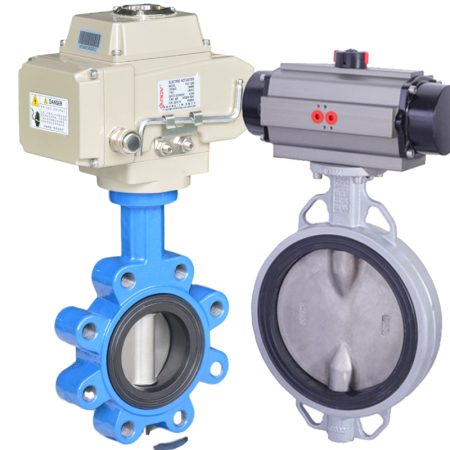
Summary of the key points discussed in the post.
In summary, the key points discussed in this post revolve around the process of selecting the right wafer style valve for your project. The initial cost of the valve is important, but it should be weighed against its quality and durability to ensure long-term value. Long-term operational costs, including maintenance, repairs, and replacements, should also be considered as they can significantly impact the total cost of ownership. The role of a reliable supplier is crucial in this process. A dependable supplier offers high-quality products, excellent customer service, and valuable after-sales services, such as warranty and maintenance support. To identify such a supplier, consider factors like their industry reputation, expertise, responsiveness, and delivery capabilities. By considering all these factors, you can make an informed decision and select a wafer style valve that meets your specific needs and provides the best return on investment.
Final thoughts on the importance of careful selection of wafer style valves for project success.
In closing, the importance of careful selection of wafer style valves for project success cannot be overstated. The choice of valve can significantly impact the efficiency, reliability, and overall operational cost of your system. A well-chosen valve, sourced from a reliable supplier, not only ensures optimal performance but also minimizes potential maintenance issues, thereby reducing long-term operational costs. This underscores the need for a thorough understanding of your specific requirements, comprehensive research on available options, and a thoughtful evaluation of potential suppliers. Ultimately, the time and effort invested in this process will pay dividends in the form of a successful project outcome, characterized by efficiency, reliability, and cost-effectiveness.


